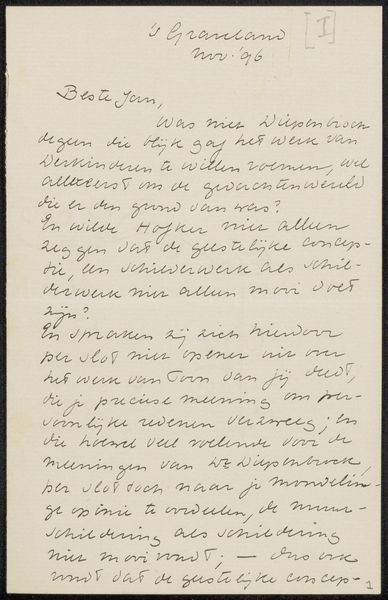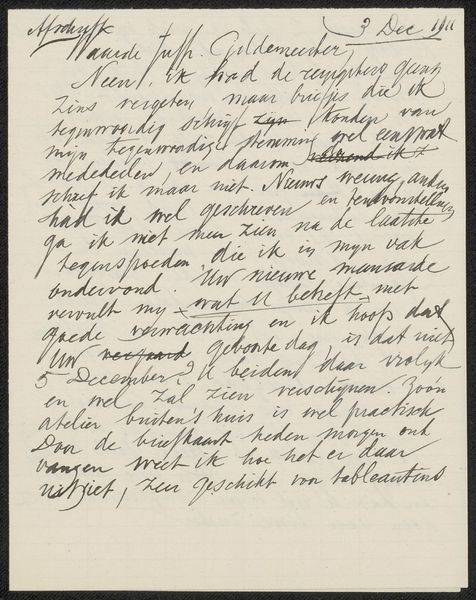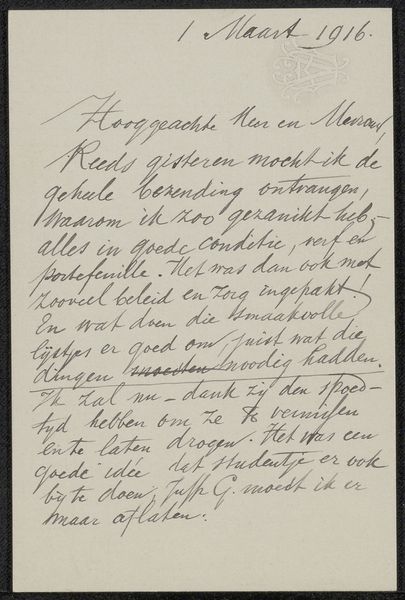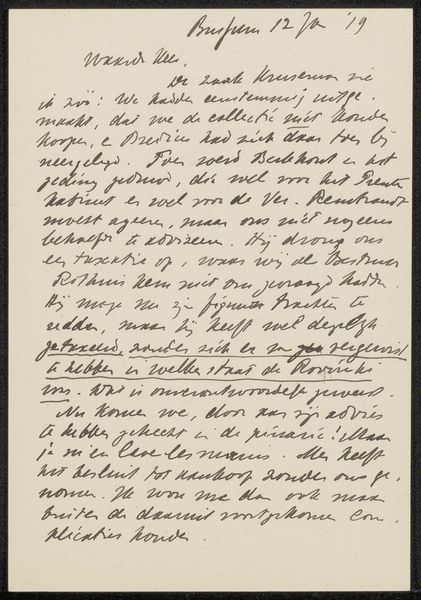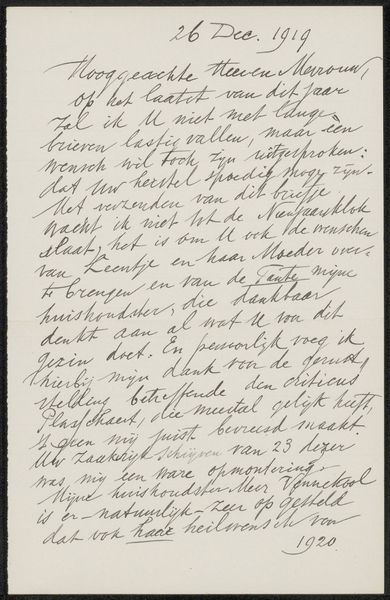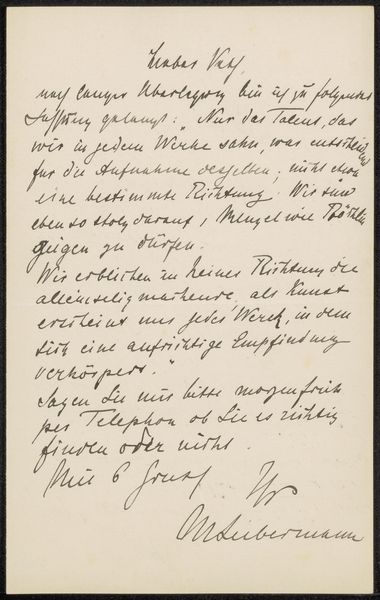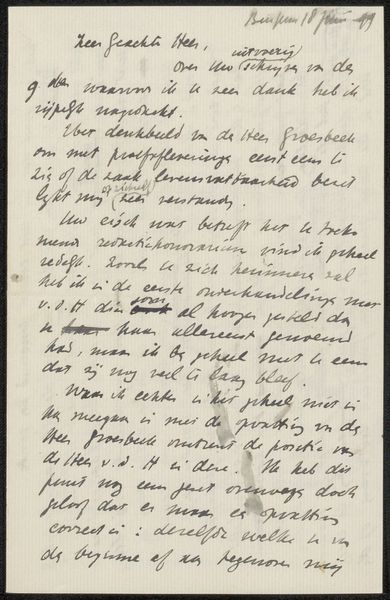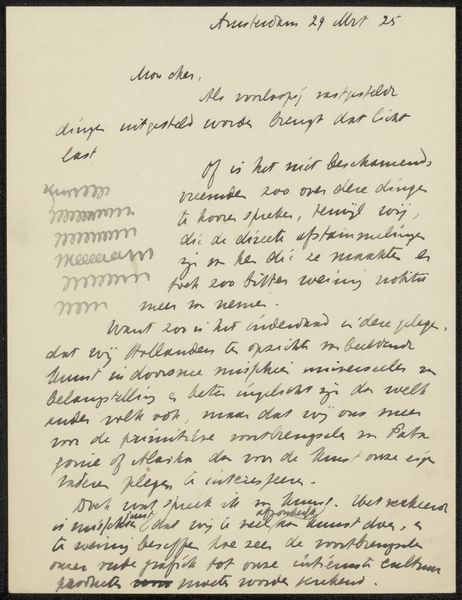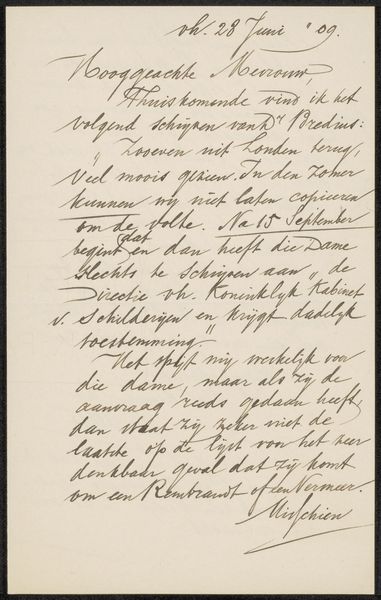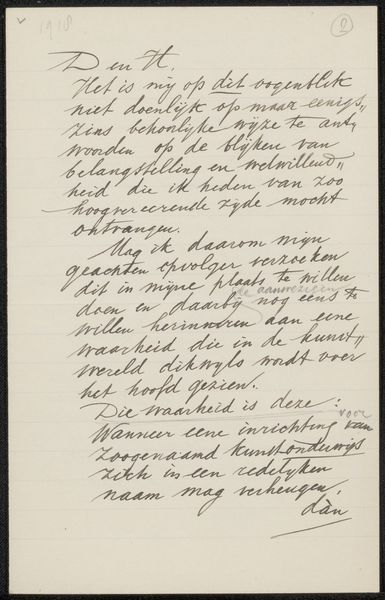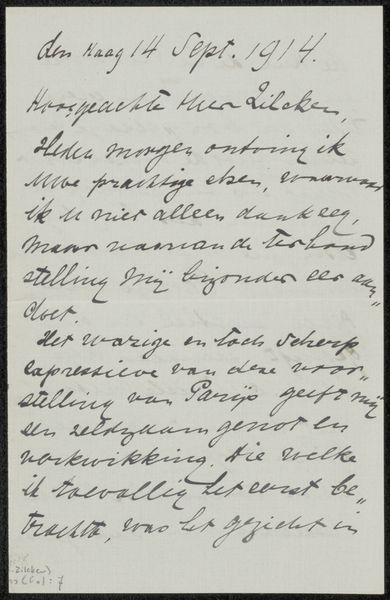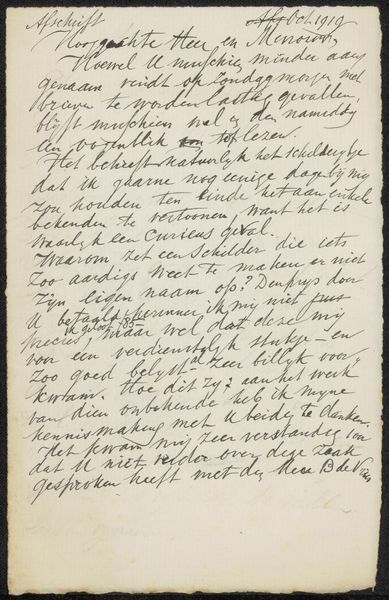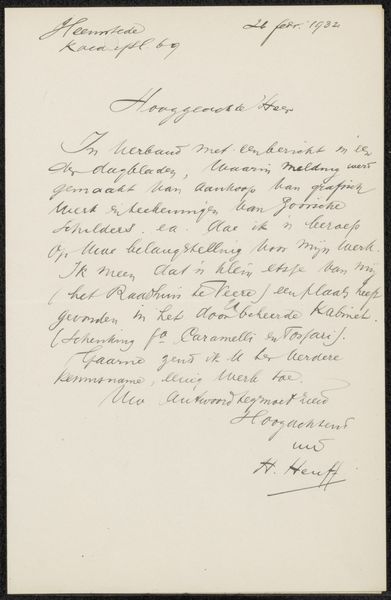
Brief aan Max Wilhelm Carl Weber en Anne Antoinette Weber-Van Bosse 1862 - 1927
0:00
0:00
Copyright: Rijks Museum: Open Domain
Curator: Ah, a letter. Looking at "Brief aan Max Wilhelm Carl Weber en Anne Antoinette Weber-Van Bosse," currently held at the Rijksmuseum. It’s an ink drawing on paper, dating roughly from 1862 to 1927 and created by August Allebé. Editor: It feels quite intimate, doesn’t it? A glimpse into someone's personal correspondence, all captured with such delicate lines. It has this feeling of, well, a quiet lament, a story best told in a hushed voice. Curator: The handwritten script certainly contributes to that sense. Allebé wasn’t necessarily aiming for perfect calligraphy; there's a rawness, an urgency even, in the way the letters flow and sometimes crowd each other. Considering the context, it appears like it was meant as a heartfelt, personal letter, meant to quickly get to the point, no time to pause. Editor: Exactly! And that very imperfection gives it its power. The imperfections in penmanship, the corrections--it shows a human connection that more polished works can sometimes lack. The writer divulges quite intimate insights of a fellow individual who seems to be in a precarious health state, that she is with ‘streng bevel tot rust en veel eten tot aansterken’; a severe and explicit decree. Curator: It makes me wonder about the relationship between Allebé and the recipients, Max Wilhelm Carl Weber and Anne Antoinette Weber-Van Bosse. What led them to preserve this document for so long? What story did this letter represent between the sender and its beholders. It suggests that perhaps such details or elements could have affected why they valued it for so long. Editor: And there's also the broader context of letter writing itself. In an age before instant communication, letters held a particular weight and depth. They were physical embodiments of thought and feeling and took the position as treasured belongings; like any artwork. Curator: A fascinating thought, isn't it? Viewing letters as tangible artifacts. And this letter, now preserved in the Rijksmuseum, transformed into a piece that resonates not just with its original context, but also with the story of all letters ever preserved. Editor: I feel as though the artwork carries so much, from historical methods of documenting our experiences through literature and philosophy, all combined with what’s been illustrated via artwork of all forms.
Comments
No comments
Be the first to comment and join the conversation on the ultimate creative platform.
